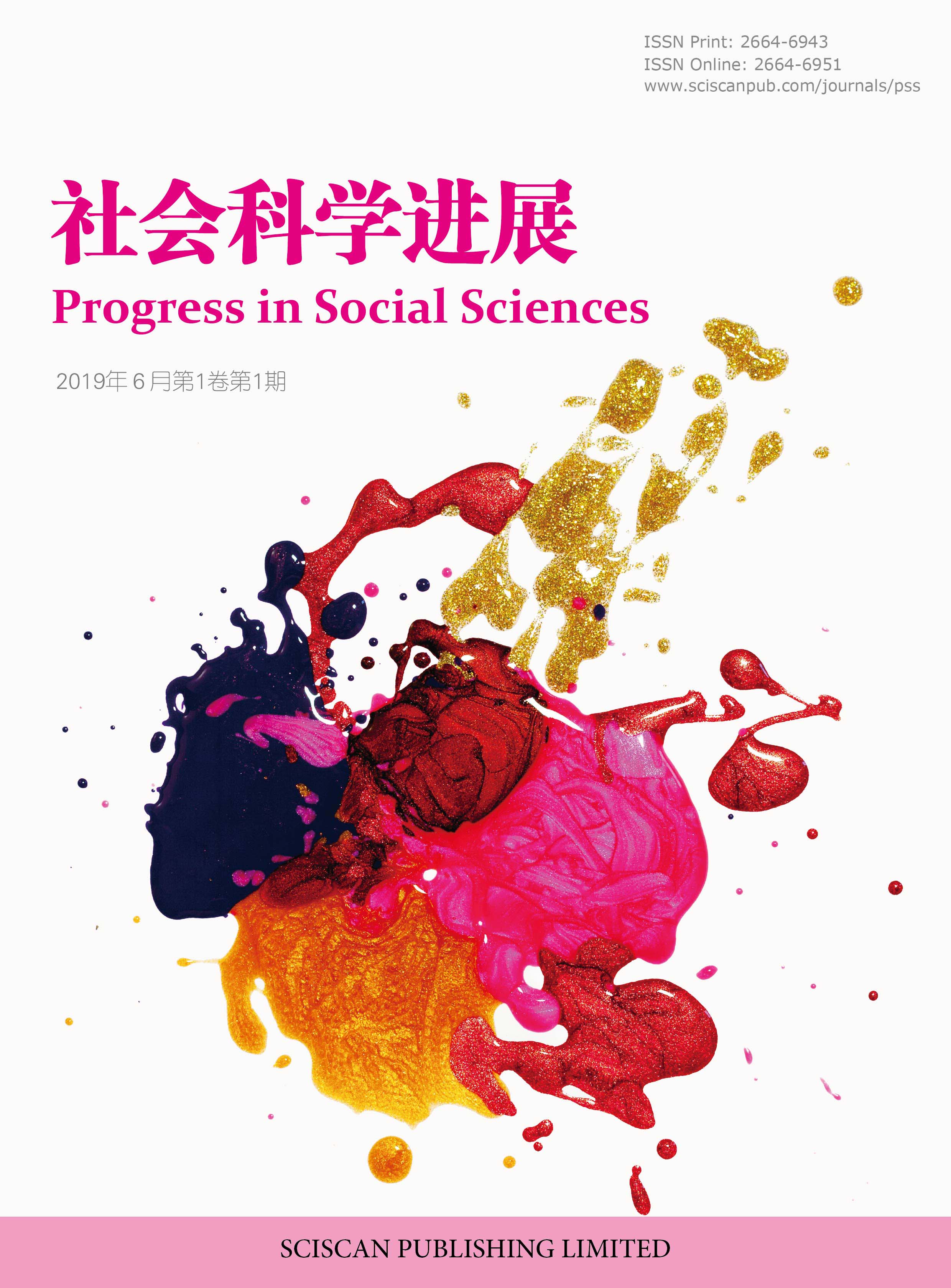Progress in Social Sciences
比较法视野下民事诉讼事实认定中经验法则的适用
The Application of the Rule of Thumb in Finding Facts in Civil Proceedings from the Perspective of Comparative Law
- Authors: 滕依淳
-
Information:
上海政法学院,上海
-
Keywords:
Rule of thumb; Fact finding; Probability; Cognitive bias; Normalize经验法则; 事实认定; 盖然性; 认知偏差; 规范化
- Abstract: China's high attention to the rule of thumb started from the "Peng Yu case" in Nanjing in 2006, whichnot only set off the moral trial and discussion of "helping and not helping" in the media, but also exposedthe chaos and disorder of the practice and application of the rule of thumb in the judicial circle. The rule ofthumb includes the general experience in the daily life of human society and the empirical knowledge in theprofessional field, reflecting the normal causal relationship between things. Because of its "experience" and"rule", the rule of experience should have both the facts and legal issues of dual attributes. In the process of findingthe facts in civil litigation, the rule of thumb also plays the functions of fact presumption, evidence evaluationand law and legal behavior interpretation. As for the rule of thumb, its extraterritorial application is earlier andmore mature than that in China. The apparent proof in German law, the "approximate presumption" in Japaneselaw and the "self-evident" principle in Anglo-American law all show that the rule of thumb plays an importantfunction in extraterritorial litigation fact finding. In the judicial practice of our country, there are two types ofrule of thumb: missing and wrong application, which is due to the probability and subjective disadvantages ofrule of thumb itself, and the cognitive bias caused by individual differences of judges. Of course, it also reflectsthe legislative deficiency related to rule of thumb in our country. Therefore, our country should fully explainthe selection and application of the rule of thumb in various judgment documents on the basis of the disclosureof the judge's heart evidence, initially explore the segmented trial mode, and build the rule of thumb appealrelief mechanism, in order to achieve the standardization of the application of the rule of thumb, promote thenormalization and effectiveness of the identification of facts, and realize the unity of the application of law. 我国对于经验法则的高度关注起始于2006发生在南京的“彭宇案”,该案不仅在媒体舆论上掀起了“扶与不扶”的道德审判与讨论,也在司法界则暴露出我国经验法则实践适用的混乱无序。经验法则包含了人类社会日常生活中的普遍经验以及专业领域内的经验知识,体现了事物之间的常态化因果联系。因其同时具有的“经验性”与“法则性”,经验法则应当兼具事实与法律问题的双重属性。在民事诉讼事实认定的过程中,经验法则还发挥着事实推定、证据评价,以及法律及法律行为解释功能。对于经验法则,其在域外的适用较之我国更早也更成熟,德国法上的表见证明、日本法上的“大致推定”以及英美法“不证自明”原则,均体现经验法则在域外诉讼事实认定中发挥着重要功能。我国司法实践中经验法则存在着适用缺失与适用错误两种类型,其源于经验法则自身的盖然性与主观性之弊,也源于法官个体差异而产生的认知偏差,当然,也体现我国经验法则相关的立法缺失。为此,我国应当在法官心证公开的基础之上在各类裁判文书中对经验法则之选取适用进行充分说理,初步探索分段式审理模式,并且建设经验法则上诉救济机制,以期实现经验法则适用之规范化,促进事实认定的规范性与有效性,实现法律适用之统一。
- DOI: https://doi.org/10.35534/pss.0603052
- Cite: 滕依淳.比较法视野下民事诉讼事实认定中经验法则的适用[J].社会科学进展,2024,6(3):623-631.
1 引言
在民事诉讼司法实践中,当事人将其收集的证据提交给法院后,证据事实并不是自动转化成案件事实的,其中还要经过法官充分的推理论证和事实认定。这一过程中若出现错误认定,极有可能直接导致错判误判。而经验法则,作为事实认定过程中搭建证据事实和推断事实桥梁的一大有效工具,一直受到理论与实务界的广泛关注。所谓经验法则,通常是指由日常生活中归纳总结而得的事物一般性因果关系或特性的法则或知识。[1]事实上,在诉讼审理实践中,法官很难绕过经验法则进行事实认定与证据评价,许多名为依据“常识”“常理”的推断,实则都是法官在无意识地运用经验法则。我国在2001年《最高人民法院关于民事诉讼证据的若干规定》(以下简称“民事诉讼证据规定”)首次规定了“根据经验法则推定的事实作为免证事实”的规则,其后历经2008年和2019年两次的民事诉讼证据规定的修订。就经验法则的司法功能而言,其可作为事实推定的大前提助力事实认定,可作为证据评价的评判依据,在法律概念与行为的解释上也发挥着重要作用。
我国对于经验法则的高度关注起始于2006发生在南京的“彭宇案”。该案在媒体舆论上掀起了“扶与不扶”的道德审判与讨论,在司法界则暴露出我国经验法则实践适用的混乱无序。由此可见,对经验法则适用的探讨研究实则是兼具理论与实践意义的话题。
经过对中国知网上以“经验法则”为主题的期刊论文进行通读,发现我国学界对经验法则的研究焦点更多在于对其概念界定、性质属性、司法功能、盖然性分类及普泛意义上的适用路径讨论,然而,这套传统的概念研究体系路径已然无法涵摄我国司法实践上出现的经验法则适用疑难,不适应我国经验法则研究的发展实况。因此,本文将研究对象再次限缩至“事实认定中的经验法则”,厘清比较法视野下域外经验法则的适用规则,论证我国司法实践上经验法则的不当适用及其原因,探析我国事实认定中经验法则的规范化和不当适用防范路径。
2 经验法则基础理论概述
可以说经验法则来源于社会一般人的日常生活,表现形式丰富多样,学理界对经验法则基础理论的阐明林林总总,但总也有共通之处。欲对经验法则的适用进行有效的后续研究,必得先正确把握经验法则的概念界定,辨析经验法则事实问题还是法律问题的性质之争,认识明确经验法则的基本司法功能。
2.1 概念界定
学理界学者们对经验法则的概念阐述各有其表,尚未形成完全的统一意见。经验法则最早由弗里德里希·斯坦(Friedrich Stein)在其著作中提出,其认为,在运用三段论进行推理演绎的过程中,应当包含一个具有一般性的概念作为前提,在此概念的基础之上再形成具有可推论特征的事实大前提。[2]
目前,国内及域外学者们对于经验法则概念定义的主要差异在于对范围界限的划定。首先是一类对范围界限划分较广的定义,该类广义概念认为经验法则可以包括从常理常识到专业领域的一切法则或知识,事实上未给经验法则设置外延界限,表现出经验法则将会随着社会的不断发展而无限扩张的特征。例如张卫平教授就认为,经验法则除了日常生活中人们归纳总结的常识之外,还可以包括在科学技术、商贸、艺术等方面专业性的知识。王亚新教授也主张经验法则可以是能够推导出事实的任何一般性的经验、常识、知识及法则等。[3]日本学者新堂幸司对经验法则的定义也是在常识之外还包括“职业上的技术、专业科学上的技术”。[4]第二类概念对经验法则界限的划定范围更狭窄,更加强调经验法则之“法则”的理性特征。我国毕玉谦学者和刘春梅学者就是秉持这样的主张,其同样认为,经验法则是对日常生产生活中通过对各类客观事物及现象进行观察认知而形成的一种普遍的理性观念认识,[5]归纳了事物及事物之间常态化的一般性因果规律和特性,是一种产生并长期存在于人类社会生产生活中的“不成文法则”[6]。另外,我国台湾地区也有学者认为,经验法则应是指事物间因果关系或状态的法规或知识,因此可以成为三段论的大前提。[7]
综上对经验法则的概念概述,可见学者们对于经验法则的定义无非是在“经验性”与“法则性”间各有侧重。广义概念强调经验法则的无限性与经验性,因此其可以来源于人类社会生活的方方面面;而狭义概念则将重音落于“法则”,突出其“规律”“确定”的特性,确保经验法则在司法中明确无误的实践适用。
由此,本文将从以下几个要点正确把握经验法则的概念界定。首先是经验法则是包括了日常生活中普遍常态化的经验以及专业领域内经过反复检验认证的经验知识,但其必定会随着人类社会发展和专业领域研究进步而呈现不断变化着的表现形式和范围界限;其次,经验法则应当体现经过总结归纳后事物间因果关系或状态的常态化联系,具有一定的明确性和普适性;最后,经验法则并非一个具体的个例事实,而是作为推导出另一事实的前提事实。
2.2 性质之争
在司法实践中,大致上所有的问题都会被分为事实问题和法律问题。按照事实问题与法律问题二分法,通常对事实问题的处理应当根据当事人提交的证据由法官自由心证来认定,而法律问题一般依据法律规范的适用得以解决。[8]
本文认为,经验法则应当具有事实与法律问题的双重属性。就事实问题属性来说,在审理过程中,当当事人穷尽一切证据证明手段后案件事实仍然真伪不明的,法官即可依据经验法则归纳总结出的常态化推导进路,在审查确保证据证明力和证据能力之后,搭建起证据与待证推断事实之间的桥梁,帮助法官进行事实认定的心路推进。就法律问题属性而言,经验法则也是对法官自由心证进行适当约束的手段,防止因法官个人偏见偏好而对某一事实进行错误认定。实际上,经验法则是为法官在审理裁判时的思维进路提供一个相对客观可信的逻辑论证规范,为法官在法律适用中提供一个法律解释和现有成文法尚未填补之漏洞的有效弥补方式,从而实现对司法三段论推理之大前提的内外证成。
“纯粹”的事实无理论探讨基础,“纯粹”的法律无司法实践适用价值。在司法裁判实践中,完全“纯粹”的事实问题或法律问题几微存在可能性,反倒是兼具事实认定和法律适用二重属性的问题更加常见。事实问题与法律问题二分的理论划分标准是回应了司法裁判理性化的功能需求,但一味地固守事实问题与法律问题的二分界限不免有裁判教条化之嫌。事实认定与法律适用在法官裁判思维中总是交织着共同指向推断的事实结论。[9]由此,经验法则既是事实问题,也涉及法律问题。
2.3 基本功能
经验法则在诉讼审理中发挥着不可或缺的重要作用。首先是经验法则的事实推定功能。在民事诉讼事实认定中,法官根据经验法则融贯证据到待证事实的推断过程,辅助法官在穷尽一切手段重要证据仍然缺失的情况下保障诉讼审理程序的正常推进。
其次是对证据的评价功能。经验法则具有评价证据的证明力、检验证据内容是否矛盾、遏制法官对证据的随意擅断的积极功能,抑制在近代民事诉讼自由心证原则下频繁出现法官恣意判断的极端情况,减少因待证事实推断过于随意而导致误判错判。
最后是经验法则对法律概念及法律行为的解释功能。在诉讼活动中,法官基本上时刻都在对当事人的法律行为和法律概念适用进行评价。然而,语言本就存在着模糊性与多义性的特征,即使是成文法条也不可避免地具有不确定概念,这就需要法官在法律适用时对其作出解释,经验法则正是为法官的解释提供了一种依据。法律行为也需要被解释,当事人的法律行为在现实生活中表现为一种客观活动,需要法律解释来为该客观行为赋予法律世界中的意义与定位。因此,法官可以运用经验法则来确定当事人行为的法律效果,对当事人法律行为作出解释。
3 域外视野下经验法则的适用
对于经验法则,其在域外的适用较之我国更早,也更成熟,两大法系国家均有根据实际国情建立起相应的经验法则适用制度。以下将具体分析经验法则在大陆法系代表性国家和英美法系代表性国家的适用,以期通过比较法论法分析为我国经验法则的适用建设提供些许借鉴。
3.1 大陆法系国家经验法则的适用
大陆法系国家随着证据法的历史发展放弃了传统的证据法定制度,而将自由心证原则作为诉讼中法官的基本裁判原则。在大陆法系国家,法官凭借其感性和理性认知对证据是否采用以及证明力的大小作出自由裁量。这就将法官从证据法定的强制性固化制度下解放出来,使其能够自如运用经验法则进行事实认定,最大程度发挥法官自由心证的效用。
在法定证据制度的时代,各类证据已然根据一般经验预设了证明力的等级标准,法官只需要将具体个案的个案导入等级标准进行比对和归类即可,法官的主观特征和个体差异在法定标准的遏制下几乎不会显现。[30]但在自由心证制度背景下,对证据能力及证明力的预先法定规则较少,法官天然的个性差异将会直接影响到具体案件中证据证明力的评判。此时,经验法则的登场就将一定程度上矫正法官主观评断的偏差,使证据证明力在实践中的判断规范化。诚然,经验法则在证明力判断中起到近乎决定性的作用,但大陆法系国家还是制定了经验法则适用标准的原则性规定,即达到所谓“高度盖然性”。
在实行大陆法系的德国对于表见证明的研究最为发达深入。表见证明可以被认为是经验法则完全地在事实认定上的适用。依据德国学者汉斯·普维庭教授的主张,表见证明是经验法则在证明评价过程中的应用,其前提应当是一个典型的事象经过,即由日常生活经验反复检验过的类似的过程,正因为这个被“定型”的过程的“典型性”,它可以被用来证明类似的事件情况。[11]从表见证明的本质来看,其实则是证据评价的内容,因此并不动摇改变举证责任分配制度。通常而言,表见证明是不影响证明标准的,除例外情况下原则性证明标准本身就被降低,那么此时经验法则可以不被要求达到“高度盖然性”,一般的经验法则即可构成表见证明。根据德国民事诉讼法之规定,表见证明的错误适用实际上是违背了自由心证原则,在德国法上构成法律审(第三审)的上诉理由。[12]
而在同样是大陆法系代表性国家的日本,发挥着与德国表见证明类似机能作用的为“大致推定”概念。日本学者高桥宏志教授认为,“大致推定”与表见证明基本上是相同的概念,当事人只需对事象发展过程的外在经过进行证明,由于这样的事象经过也以具有高度盖然性的经验法则为基础,所以法院无需要求提供更加细致具体的证据,仅进行概括性事实认定。[13]在具体的诉讼纠纷中,若对方当事人能够提出反证,即能够证明该常态化事象经过也存在着不符合一般性常理、例外的特殊情况,动摇法官形成的暂时心证,“大致推定”之结果是可以被完全推翻的。若法官“大致推定”适用错误或不当,也构成当事人提请上告审之理由。
3.2 英美法系国家经验法则的适用
在英美法系国家,经验法则的适用被称为“不证自明”,被广泛适用于事实推定及证据评价。受英美法系国家当事人主义的诉讼构造和陪审制度的诉讼传统影响,经验法则在司法实践上的运用往往会被法定化,使其具有一定的强制性意味。英美法公认的“不证自明”原则的首次实践适用是1863年的伯恩诉博德尔(Byrne v. Boadle)案,基本案情为原告被从被告货栈楼梯上滚下的面粉桶砸伤,其裁判中的核心推断在于:案情本身就体现着被告方存在着过失,如果不存在被告的某种过失,则面粉桶不会从楼上滚下,则原告也不会受伤。[14]
就“不证自明”原则的效力,学界似乎还存在三种争议性学说。首先是证据法则说,其认为“不证自明”原则使原告避免因无直接证据而直接败诉的结局,同时也为增加被告证明负担;其次是事实推定说,其主张“不证自明”原则使被告负有举证责任,最后是法律推定说,其主张“不证自明”原则导致证明责任出现转换,由被告对“不存在过失”承担证明责任。
在英美法学者的眼中,“不证自明”原则实则是可依据人类日常生活经验推导的、简单和已被接受的证据规则,其中蕴含的经验法则为:若被告存在过失,即损害结果是由被告所造成,那么原告天然地应当被相信其对损害原因无从得知。若根据事实已经足够推定被告存在过失,法官对此无需再进行审理,交由陪审团裁决即可。英美法系国家对“不证自明”原则之适用普遍接受良好,其“原告证明负担减轻”的特征,使其在一些因专业性、技术性强而原告举证苦难的侵权案件中尤为适用。
4 我国民事诉讼事实认定下经验法则的不当适用及成因分析
在具体案件审判过程中,对于经验法则的适用,尤其是具有高盖然性的经验法则的适用,无疑再诉讼中是起到积极意义的。然而,我国程序法上经验法则的规则制定尚未完全体例化,实践适用也尚未规范化,这就导致经验法则适用的“阴暗面”显现。下文将概述我国民事诉讼立法上经验法则相关的成文法条,以典型案例明确我国事实认定下经验法则适用不当的类型化,并尝试对不当成因进行论证分析。
4.1 我国民事诉讼立法上的经验法则
我国在2001年制定的《民事诉讼证据规定》首次规定了经验法则相关内容,承认许可了法官在事实认定与证据评判中对经验法则的运用,历经两次民事诉讼法的修订后,目前实行的是2019年公布的《民事诉讼证据规定》。另外,在2015年实施的《最高人民法院关于适用<中华人民共和国民事诉讼法>的解释》中也有关于经验法则的规则制定。
4.2 经验法则适用不当之类型化
关于我国经验法则适用不当的案例,本文认为可以分为经验法则适用缺失和经验法则适用错误两种类型。
首先是经验法则适用缺失的类型,属于“应当适用经验法则而未适用”。在法官的审理过程中,事实认定实则是由证据事实推向案件事实的建构过程,经验法则在这一建构过程中,通过评价证据能力及证明力大小,破除案件事实真伪不明、诉讼进程停滞不前的局面。若经验法则无故“缺席”,会带来证据审查分析不完整、证据链条上下部分无完全耦合的消极后果,从而导致错误裁判的风险骤然升高。
例如2003年发生在北京的黄某诉美晟房产公司商品房预售合同纠纷案,一审法院未适用经验法则而作出错误裁判,但二审法院积极合理地适用经验法则,认为根据一般人视角下地日常生活经验,业主在验房收房时是不会对房屋明显瑕疵视而不见的,极大概率会向房产公司告知其诉求,因此被上诉人以上诉人已经入住该房屋为由称上诉人对房屋现状处于认可状态的辩解是不符合经验法则的。一审法院未能及时适用经验法则而造成了错误的裁判,损害了当事人的合法权益。
其次是经验法则适用错误的类型,属于“不应适用而错误适用”。经验法则适用错误,显然会对事实认定的结果产生消极影响,造成法官认定的案件事实与真实相悖偏差过大和司法公信力的下降。
最具代表性、体现经验法则适用错误的案例便是家喻户晓的“彭宇案”。在该案的事实认定中,实际上是缺乏能够证明“原被告是否直接相撞”的有力直接证据的,而法官错误运用三条达不到“高度盖然性”标准的经验法则来对被告彭宇的行为进行事实推断,就造成了其事实认定不仅违背了证据原理,还产生社会普遍信仰和良善道德观念的冒犯与质疑。这样的裁判结果显然是无法为社会大众所接受的,过分超出了当事人甚至是国民对于诉讼裁判的预期性,其裁判结论确实不合理。
4.3 经验法则适用不当之成因分析
显然,经验法则在我国司法实践适用上易有“失控”局面的发生。本文认为,经验法则的实践适用因其自身特性本就伴随着运用的风险,然而我国经验法则相关立法规范尚未完善也提高了经验法则适用不当的可能。
首先,不可避免地,经验法则本身就具有盖然性与主观性。从上述经验法则的概念辨析即可知晓,大部分的经验法则是从人类社会日常生活的事物常态联系中抽象提取出的,其从产生伊始就无法做到像自然科学定理一般无限贴近客观真理。法官在运用经验法则进行逻辑推导时也被要求选取盖然性程度高的经验法则,以此尽可能地保证经验法则适用容错率,但这也并不能完全规避经验法则反面情况发生的可能。从某种程度上来说,经验法则之适用更像是一种“盖然性的循环叠加”。而经验法则的理解适用也是带有主观特性的,其不似自然科学范畴内的概念一般拥有准确的内涵定义、完整的逻辑推导和严密的证明体系,而是对社会公众接受认可程度的大致粗略估算。
经验法则盖然性与主观性的特征直接导致的便是因法官个体差异化而产生的认知偏差。我国民事诉讼审判中赋予法官一定程度上的自由裁量权,其可以自由选择是否适用经验法则以及适用何种经验法则,这就意味着法官个人对于经验法则的理解占据法官事实认定的重要部分。不得不承认,实际上每个人对于某一事物的理解都必然是有所出入的,不可能达成百分之百的共识,这一点也必然体现于经验法则的实践适用上,即使是训练有素的法官团队也无法避免。因此,法官在运用经验法则进行事实推定时就有可能会产生认知偏差。按照认知心理学上的概念,会对法官造成认知偏差的是代表性启发和后见偏见这两种心理倾向形式。[15]代表性启发是指在进行分类决策时人们往往会将对待操作对象的判断建立在与之具有代表性相似类型的比较之上。后见偏见则是指人们在已经了解某一事实发生的结果时往往会高估其事件发生的可能性与可预见性。这都体现出人们的思维观念更容易向其认知掌握区域靠拢的趋势。这种认知偏差在事实认定过程中直接影响了法官的事实推断和证据评价。
最后,经验法则的适用不当一部分页归因于立法规范的缺失。我国立法上对于经验法则的制定稍显粗糙,其适用程序性规制甚至时缺失,经验法则适用标准模糊,完全依靠法官自由裁量,同时立法上也未明确经验法则适用不当的救济机制,对当事人合理诉讼权益缺乏保障。
5 我国事实认定下经验法则适用的规范化路径
分析经济法则适用之困境成因就是为了有针对性地探析其破局路径。根据上述对我国经验法则实践适用的分析,可以发现我国经验法则的适用尚未形成统一的实践规范,法官实际上是为“个人想法”冠上“经验法则”之名,这必然导致事实认定之结论漏洞百出。为此,本文尝试寻求经验法则适用规范化路径,推动事实认定的规范性与有效性。
5.1 心证公开基础上的充分说理
我国《最高人民法院关于加强和规范裁判文书释法说理的指导意见》第四条和第十三条就提出应当加强对运用经验法则的论证阐释,以提高裁判结果的可接受性。裁判文书的公开说理,是庭审过程中案件证据事实与法官自由心证的案后重现,应当为当事人和社会公众所知晓甚至是监督。[16]基于法官自由心证的前提背景,法官适当公开阐述其对经验法则选择和运用的心证过程,实际上为当事人诉讼权利的救济增添了一层保障,抑制法官自由裁量的不合理不合规可能。
另外,强化经验法则的裁判说理也是为经验法则案例指导制度体系的构建积累实践素材。建构指导性案例的目的在于确保相似案情的相似裁决,以解决法律规范难以适用或尚且存在法律漏洞的难题。[17]若能够在我国建立起经验法则指导性案例体系,则对经验法则之适用就具有事实上的约束力。法官对选入指导性案例中的经验法则视而不见,而选择适用一种带有强烈个人主观色彩的经验倾向,则其应当面对案件被上级法院发回重审或直接改判的后果。而只有加强经验法则在裁判文书中的说理阐释,才能由足够的实践素材构成经验法则指导性案例,以便后续类案的参照适用,保障法律适用的统一性。
5.2 分段式审理的探索
对于经验法则容易产生认知偏差的消极后果,有学者提出或可采用分段式审理的方法规避其适用风险。因为诉讼构造的事后属性,法官只能是站在当今的视角回溯案件发生时的事实证据,需要考虑到法官也是一个“人”,其在诉讼审理过程中产生认知偏差也无可厚非,除了法官需要提高其自身素养,也要为其设立合理的程序保障,以减少认知偏差对案件裁判的影响。
分段式审理是指在法官间进行分工,将案件中当事人行为之合理性审查与案件最终裁判分别交由不同的法官。[18]这主要是出于避免居中裁判的法官被已知的事件结果所“污染”而采取的一种隔离性程序保障手段。被“隔离”出来的法官在对已然发生的结果并不知情的情况下,更能真正站在案外的一般人视角对当事人行为的合理性判断分析,尽可能地将后见偏见排除出法官事实认定的过程中去。
这种分段式审理在国外多有适用,基于其陪审团模式,基本是由陪审团负责对当事人行为之合理性进行审理判断,有学者认为在我国这种分段式审理的模式可以结合人民陪审员制度进行初步实践探索。
5.3 经验法则不当适用的上诉救济机制
在德国、日本以及我国台湾地区,经验法则的错用可以构成上告之理由。实际上其学界也存在着经验法则是否能够作为法律审上诉理由的探讨。持肯定说的观点认为,经验法则之适用存在法规性的特点,其错用应当按照违反法律进行处理;持否定说的观点认为,经验法则适用处理的是事实问题,若其运用错误应当是由负责事实审的一审法院进行重新裁判。因此,笔者认为,考虑到经验法则实际上能够成为法律适用的依据,经验法则的错误运用应当被允许上诉予以救济。若上诉后法官认为,其经验法则仅仅涉及事实认定部分,再裁定驳回上诉也无不可。这样的程序设计并不带来过大的司法压力,也不过分司法谦抑,反而基于当事人充分的诉讼救济保障,不失为经验法则适用不当问题的有效处理机制。
6 结语
本文依循经验法则基础法理论、域外经验法则适用考察、我国事实认定中经验法则实践之困以及经验法则规范化路径的脉络进行研究。经验法则抽象于日常生产生活中事物的常态因果与联系,实际上兼具了事实问题与法律问题的双重属性。域外对经验法则的适用研究也在一直发展,总体上呈现这样的趋势:大陆法系国家自由心证制度背景下给予法官对经验法则的自由裁量,而英美法系国家基于其判例法的传统实行经验法则之法定化。我国司法实践上对于经验法则的适用不当可以分为“适用缺失”与“适用错误”两种类型,主要是由于经验法则本身的经验性与主观性、法官产生的认知偏差以及我国立法规范的缺失。经验法则的规范化适用还是需要依靠心证公开基础上的裁判文书充分说理、分段式审理模式的初步探索以及上诉救济机制的建设来完成。
参考文献
[1]张卫平.认识经验法则[J].清华法学,2008(6):6-24.
[2]米歇尔·塔鲁否,孙维萍.关于经验法则的思考[J].证据科学,2009,17(2):174-183.
[3]王亚新.社会变革中的民事诉讼[M].北京:中国法制出版社,2001:321-322.
[4][日]新堂幸司.新民事诉讼法[M].林剑锋,译.北京:法律出版社,2008:462.
[5]毕玉谦.试论民事诉讼中的经验法则[J].中国法学,2000(6):111-118.
[6]刘春梅.浅论经验法则在事实认定中的作用及局限性之克服[J].现代法学,2003(3):138-143.
[7]陈荣宗,林庆苗.民事诉讼法[M].中国台湾:三民书局,2006:487.
[8]黄茂荣.法学方法与现代民法(第五版)[M].北京:法律出版社,2007:296.
[9]陈林林,何雪锋.论经验法则的司法定位[J].求是学刊,2017,44(3):97-104,173.
[10]张弘.证据评价问题探究[J].国家检察官学院学报,2007(3):116-121.
[11][德]汉斯·普维庭.现代证明责任问题[M].吴越,译.法律出版社,2006:134.
[12]谢怀栻译.德意志联邦共和国民事诉讼法[M].北京:中国法制出版社,2001:70.
[13][日]高桥宏志.民事诉讼法:理论与制度的深层分析[M].林剑锋,译.北京:法律出版社,2004:461.
[14]王利明.侵权行为法归责原则研究[M].北京:中国政法大学出版社,1992:63.
[15]陈林林,何雪锋.司法过程中的经验推定与认知偏差[J].浙江社会科学,2015(8):26-32,156-157.
[16]孙海龙.司法责任制改革[M].北京:法律出版社.2017:107.
[17]张亚东.关于案例指导制度的再思考[J].法律适用,2008(8):34-37.
[18]蔡艺生.论经验法则在司法裁判中的运行——基于认知科学的实证研究[J].政法学刊,2017,34(3):72-77.
















